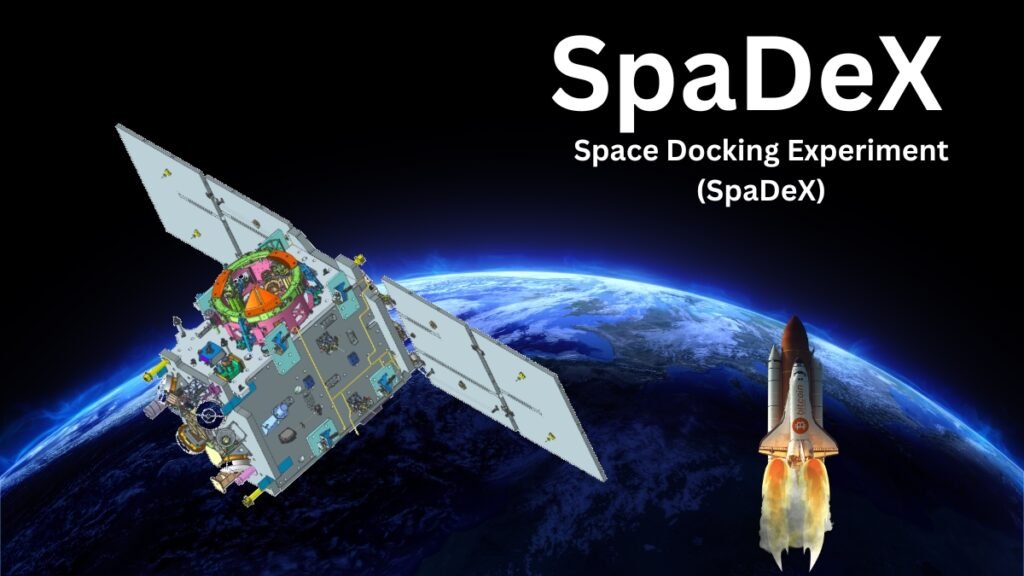Analyzing the Significance of the Space Docking Experiment (SpaDeX)
India has taken a major leap in space technology with the successful execution of the Space Docking Experiment (SpaDeX). Conducted by the Indian Space Research Organisation (ISRO), this mission marks the country’s entry into the elite league of nations mastering autonomous space docking technology. This milestone sets the stage for India’s ambitions in human spaceflight, space station construction, and in-orbit satellite servicing.
This article explores the significance of SpaDeX, the technology behind it, the challenges faced, and the future possibilities it unlocks for India’s space program.
Understanding SpaDeX: A Revolutionary Experiment
SpaDeX is an in-space docking experiment designed to demonstrate India’s capability in autonomous orbital rendezvous and docking. This technology is essential for various space missions, including crew transfers, satellite refueling, and assembling structures in orbit.
The experiment involved two identical small satellites, each weighing approximately 220 kg. These satellites were launched into orbit, where one acted as the “Chaser” and the other as the “Target.” The Chaser performed a series of precision maneuvers to gradually approach and dock with the Target, simulating real-world space docking operations.
Key aspects of SpaDeX include:
- Autonomous docking system: The satellites successfully docked without manual intervention, proving India’s ability to develop self-sufficient space systems.
- Orbital maneuvering precision: The Chaser performed controlled approach sequences to align with and dock to the Target.
- Post-docking operation: After successful docking, both satellites operated as a single combined unit, testing the ability to manage composite spacecraft control.
- Separation and independent functioning: Once the docking phase was completed, the satellites undocked and resumed independent operation.
The success of this mission establishes India’s technical competence in spacecraft rendezvous and docking, a crucial requirement for future space stations and interplanetary missions.
Why Space Docking Matters: The Broader Impact
Docking technology is a game-changer for space exploration. Countries like the United States, Russia, and China have long mastered space docking, enabling them to build and operate their own space stations. With SpaDeX, India joins this exclusive group and enhances its ability to:
- Support Human Spaceflight Missions: Docking technology is essential for missions where crew members need to transfer between spacecraft or receive supplies from Earth. This will play a key role in India’s Gaganyaan program, which aims to send astronauts into space.
- Enable Space Station Development: India has plans to launch its own independent space station in the coming years. The ability to dock spacecraft autonomously is a critical capability for assembling and maintaining space infrastructure.
- Facilitate Satellite Servicing: Docking mechanisms allow for on-orbit repairs, refueling, and upgrades of satellites, significantly extending their lifespan and reducing costs for future missions.
- Advance Interplanetary Exploration: Future missions to the Moon and Mars will require docking capabilities for assembling spacecraft in Earth’s orbit before launching them toward deep space destinations.
With SpaDeX, India is now equipped to develop and expand its presence in orbit, ensuring a sustainable and long-term space exploration strategy.
Challenges Faced and How They Were Overcome
Achieving autonomous docking is a complex process that requires exceptional precision, coordination, and software intelligence. Some of the key challenges faced during the SpaDeX mission included:
1. Precision Maneuvering in Orbit
Spacecraft docking requires accurate navigation and real-time adjustments to ensure that the docking process happens smoothly and safely. ISRO engineers developed advanced guidance and control systems to allow precise movement of the Chaser satellite toward the Target.
2. Avoiding Collision Risks
One of the biggest risks in space docking is an uncontrolled collision, which could damage both spacecraft. To prevent this, SpaDeX used autonomous fail-safe mechanisms that could abort the mission if any unexpected movements were detected.
3. Communication and Coordination
The docking process required continuous data exchange between the two satellites to align their positions correctly. Engineers designed a high-speed communication network to relay real-time information, ensuring a seamless docking sequence.
4. Overcoming Budget Constraints
Unlike other space agencies that conduct multiple test missions, ISRO successfully executed SpaDeX within limited financial resources, making it a highly cost-effective achievement.
Despite these challenges, ISRO engineers and scientists successfully navigated the hurdles, proving India’s growing expertise in advanced space technologies.
The Future of India’s Space Docking Capabilities
SpaDeX is only the beginning of India’s journey into advanced space docking technology. Moving forward, ISRO aims to enhance and expand these capabilities for more ambitious missions. Some of the expected developments include:
1. Space Station Development
India has announced plans to build its own space station in the near future. The ability to dock and undock spacecraft is crucial for assembling and maintaining such a station.
2. Human Spaceflight Expansion
With the Gaganyaan mission set to launch soon, docking technology will be essential for crew transfers and supply missions to ensure long-term human presence in space.
3. International Collaborations
With India now possessing docking capabilities, there is potential for collaborative missions with global space agencies, further strengthening India’s role in the global space community.
4. Future Lunar and Mars Missions
As India expands its ambitions to the Moon and Mars, space docking will be required for assembling deep-space transport systems that can carry astronauts and cargo to these destinations.
Conclusion: A Milestone in India’s Space Journey
SpaDeX represents a monumental achievement for India’s space program, demonstrating that ISRO is now capable of executing complex docking maneuvers autonomously. This success not only strengthens India’s technological capabilities but also paves the way for future advancements in human spaceflight, satellite servicing, and deep-space exploration.
With this historic breakthrough, India is now firmly positioned as a global leader in space technology, ready to take on even greater challenges in the coming decades. The success of SpaDeX is a testament to ISRO’s scientific ingenuity, engineering excellence, and unwavering commitment to advancing space exploration.
